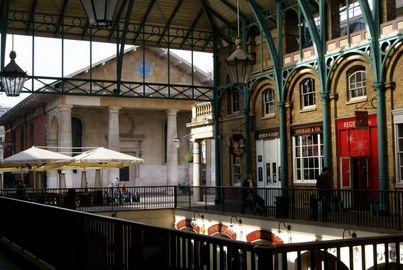

The market set up by the Dukes of Bedford in 1630 – on land they had cleared of many streets of slum dwellings – didn't have its own building. The market traders were free to build their own wooden stalls – although this added the risk of fire to the existing problems of smell, noise, dirt, and prostitution. None of this bothered the monarchy or aristocracy during the 18th century, especially as they themselves were enthusiastic consumers of the services on offer at Covent Garden. But by 1830 the situation had got out of control – and a new age of religious solemnity and high morals had begun. The wooden stalls of the old market were dismantled, in favour of a grand new market building designed by architect Charles Fowler – the market building we see today. Fowler originally intended his building for the sale of fruit, vegetables, meat, and other food. But in 1974 all the sales of food products were relocated to the Nine Elms New Covent Garden Market (four miles away, on the opposite bank of the River Thames) so that the Covent Garden area could be turned into the huge tourism and entertainment area we see today. Take a walk through the market building, and admire its neoclassical architecture, built from Haytor granite, hauled here especially from Devon.